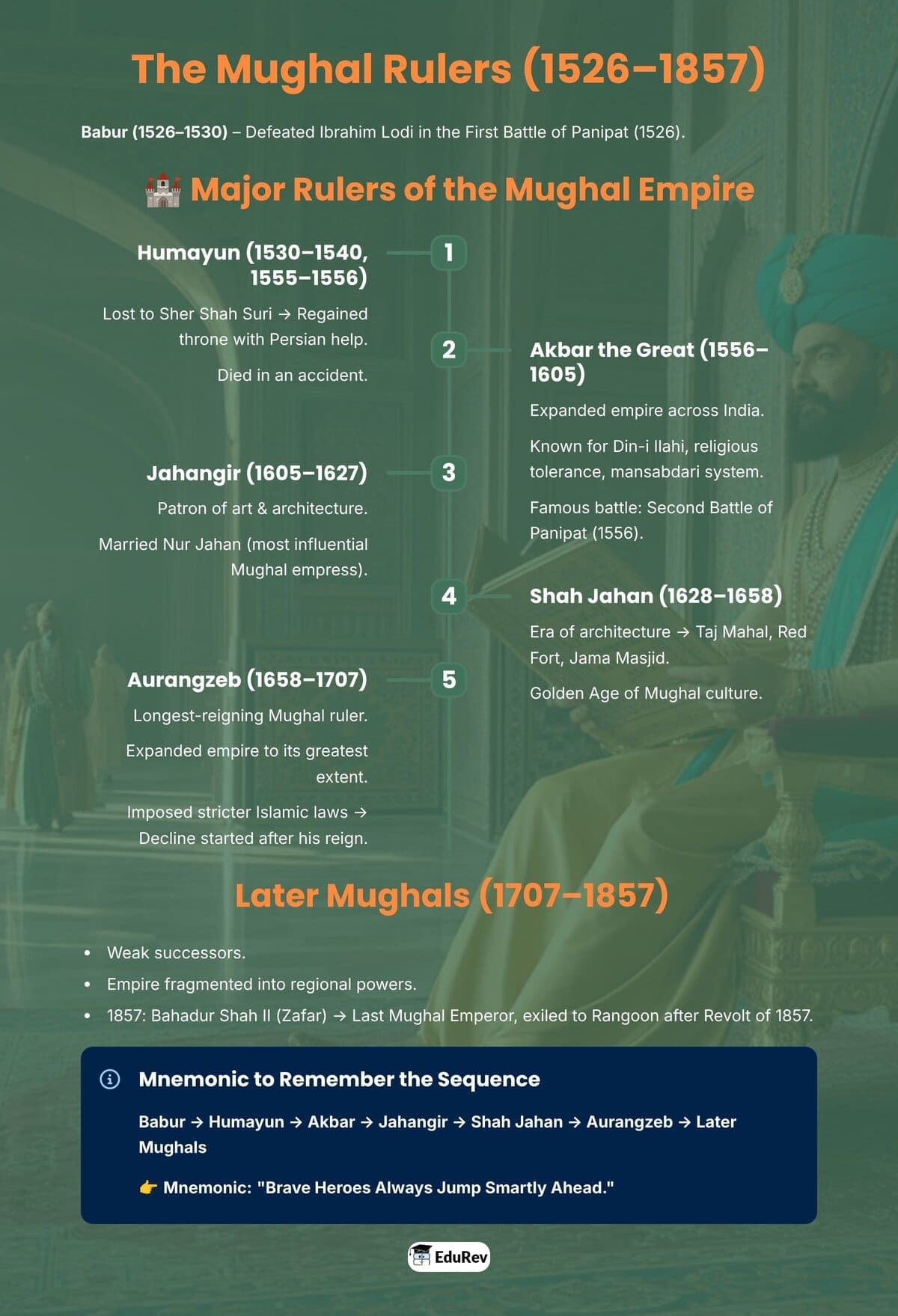SSC CGL Exam > SSC CGL Notes > General Awareness for SSC CGL > Infographic: The Mughal Empire
Infographic: The Mughal Empire | General Awareness for SSC CGL PDF Download

The document Infographic: The Mughal Empire | General Awareness for SSC CGL is a part of the SSC CGL Course General Awareness for SSC CGL.
All you need of SSC CGL at this link: SSC CGL
|
528 videos|2113 docs|339 tests
|
FAQs on Infographic: The Mughal Empire - General Awareness for SSC CGL
| 1. What were the main achievements of the Mughal Empire during its peak? |  |
Ans. The Mughal Empire is renowned for several key achievements, including the establishment of a centralized administrative system, the promotion of arts and culture, and significant architectural advancements. The construction of iconic structures like the Taj Mahal and Red Fort exemplifies the empire's commitment to grand architecture. Additionally, the Mughal rulers contributed to the flourishing of literature, painting, and music, fostering a rich cultural environment.
| 2. Who were the prominent rulers of the Mughal Empire, and what were their contributions? |  |
Ans. The Mughal Empire had several notable rulers, including Babur, the founder, who established the dynasty; Akbar, known for his policy of religious tolerance and administrative reforms; Jahangir, who was a patron of the arts; and Shah Jahan, famous for commissioning the Taj Mahal. Each ruler contributed to the empire's expansion, cultural richness, and administrative sophistication.
| 3. What role did religion play in the Mughal Empire? |  |
Ans. Religion played a significant role in the Mughal Empire, particularly during Akbar's reign, who advocated for a policy of religious syncretism known as Din-i Ilahi, promoting harmony among different faiths. The empire was predominantly Muslim, but it encompassed a diverse population, including Hindus, Sikhs, and Jains. This religious diversity influenced governance, art, and social policies of the time.
| 4. How did the Mughal Empire influence Indian society and culture? |  |
Ans. The Mughal Empire profoundly influenced Indian society and culture through its patronage of the arts, literature, and architecture, leading to a unique blend of Persian, Indian, and Islamic traditions. The empire promoted a rich cultural dialogue, resulting in advancements in painting styles, poetry, and music. Additionally, the Mughal administrative practices impacted the governance structures in subsequent Indian states.
| 5. What led to the decline of the Mughal Empire? |  |
Ans. The decline of the Mughal Empire was attributed to several factors, including internal strife, weak leadership after Aurangzeb, economic challenges, and increasing regional autonomy. The empire faced challenges from emerging powers, including the Marathas and British colonial interests, which further weakened its control and led to its eventual fragmentation.
Related Searches




















